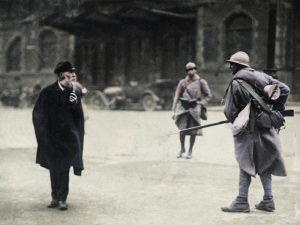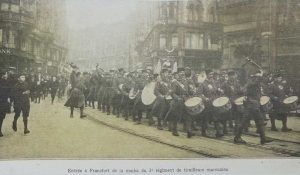The Treaty of Versailles was signed in the immediate aftermath of the Armistice. It was intended to make the Germans pay (in money and coal) for the destruction caused by the war, but also for the sufferings inflicted on the French and Belgian civilian populations. The Treaty also provided for the occupation by French, British, American and Belgian forces of the German regions on the left bank of the Rhine and part of the right bank. The French inherited the largest zone of occupation. It grew even larger after the withdrawal of the American soldiers. Created in October 1919, the French army on the Rhine had 100,000 men in the Rhineland and up to 210,000 during the first occupation of the Ruhr. The Belgians occupied the area between Düsseldorf and the Dutch border and were the first to be fully compensated, which contributed to the rapid reconstruction of the country.

The heavy sanctions imposed on Germany threw the country into an unprecedented economic and political crisis. The German people could not digest this humiliation and were determined to restore their honour in the following decades. Thus, the rise of fascism in Germany in the 1930s was largely linked to this treaty and the resentment it provoked among the German population. As a result, Hitler opposed the Treaty of Versailles from the beginning of his political rise and when the Nazis came to power in Germany in 1933, they rejected any idea of paying compensation. The consequences of the Treaty of Versailles were also visible in Italy and Austria. The promises made to the Italians and Austrians on the reattribution of territories and “their freedom of self-determination” were not respected, which explains the agreement of the Axis members in 1939.
